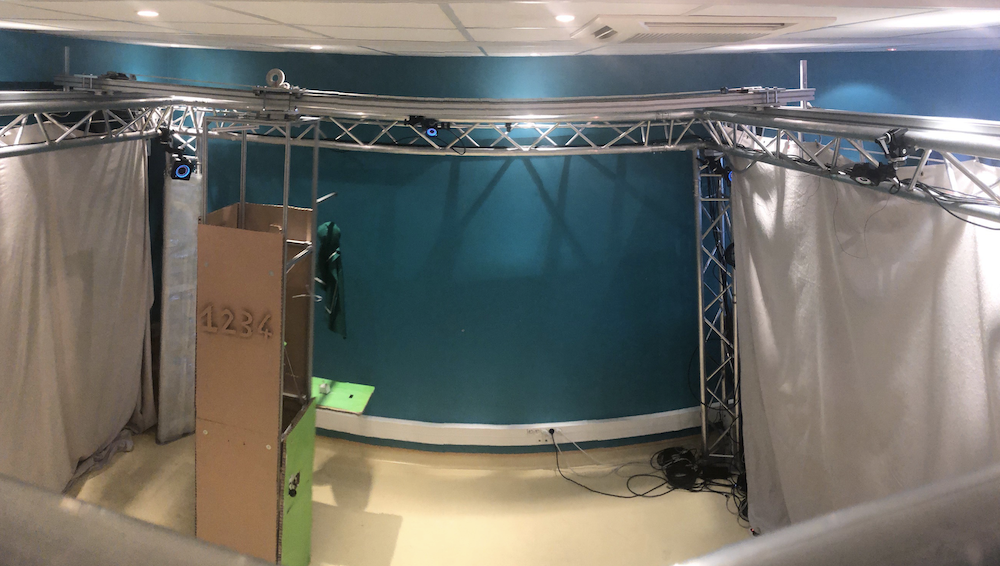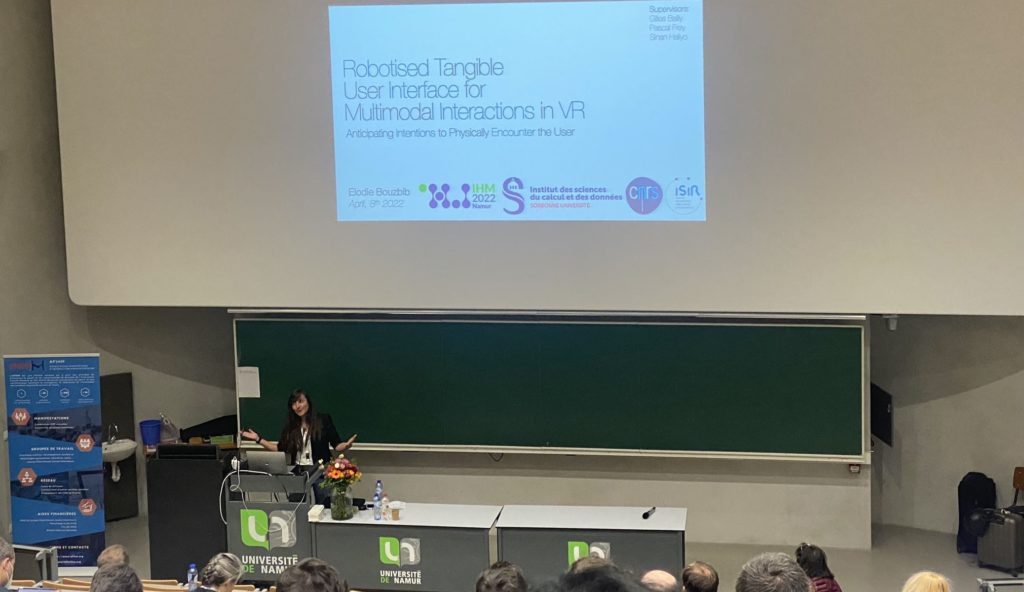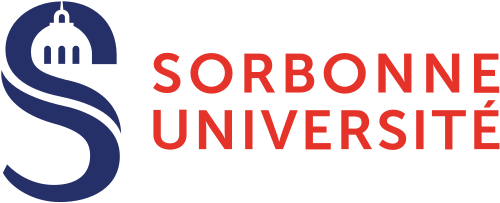Beyond sight and hearing, Virtual Reality (VR) devices are interested in the sense of touch to offer an ever more immersive experience. Haptics is a field of research that is very much studied at ISIR. Focus on the VR platform at the initiative of Elodie Bouzbib, former PhD student of the laboratory, who won the prize for the best multidisciplinary thesis 2022 of the AFIHM.
Virtual Reality is used in many fields such as entertainment, education or training, all sectors that require a high level of realism. Despite the integration of vision and auditory signals in virtual systems, something is still missing for total immersion: the sensation of touch.
The virtual world is therefore increasingly interested in the sense of touch that can be provided by haptic technologies. The sensation of touch provides additional sensory information. The user can then physically interact with virtual objects and obtain, through haptic feedback, physical sensations.
The integration of haptics in Virtual Reality
It is for this field of research that Elodie Bouzbib, a former doctoral student in the ISIR‘s Multi-Scale Interactions team, has chosen to focus: the integration of haptics in VR. Elodie proposes to describe this haptic integration, with a multidimensional aspect, according to three perspectives:
- the haptic feedback, which corresponds to the different stimulated haptic signals and their intensity, perceived by the user ;
- interaction techniques, which correspond to the tasks that users can perform and/or the methods that make them possible;
- and haptic solutions, whose perspective is based on hardware.
Through her thesis, Elodie explores the challenges and opportunities according to these three categories, focusing on the design, implementation, and evaluation of robotic haptic interfaces in VR. She promotes the use of haptic solutions, and then proposes the design, implementation and evaluation of CoVR.
CoVR is a robotic interface that anticipates users’ intra- and inter-object intentions, and physically encounters them with an object of interest, before the interaction occurs. This interface provides a multitude of interactions with both tactile and kinesthetic coherent feedback. In effect, CoVR is a physical column mounted on a robot to provide strong kinesthetic feedback in a room-scale VR arena. The column’s panels are interchangeable and its movements can safely reach any location in the VR arena, thanks to displacements and trajectory generations that avoid collisions with the user.
Birth of the federative project CoVR, a virtual reality platform

Elodie initiated the first version of this federative project. “I built a platform to provide multimodal interactions in virtual reality: the CoVR robotic interface. I think my supervisors and I had the same vision for the design and implementation of this platform, right from the beginning of my thesis,” she explains.
In just a few months, the operating system for the first version of CoVR was in place. This first version helped communicate to the rest of the laboratory the scope of the project’s ambitions and the potential benefits of this interface. The team quickly realized that this platform could benefit many projects, and that it could be interesting to exploit it more widely. This project was therefore proposed as a federative project of ISIR, with the objective of having a platform that centralizes the mixed research of the laboratory and that facilitates inter and intra team collaborations. After being voted on by the ISIR scientific council, CoVR became a federative project, involving shared funding from the laboratory and integrating the technical department into the project.
“My thesis, my research, and CoVR are anchored in Human-Computer Interaction (HCI), but my research areas also extend to haptics, virtual reality, and robotics. I think that the federative project around CoVR is a good demonstration of the multidisciplinarity of our laboratory and of the type of research conducted at ISIR“, underlines Elodie.
A multidisciplinary research framework
By joining a multidisciplinary laboratory such as ISIR, Elodie was able to be supervised by personalities from different worlds and research fields. A generalist engineer by training, Elodie has had the opportunity to work in computer science, electronics, HMI, prototyping, and management in her past experiences. “At ISIR, I was lucky enough to be part of a team that valued these multiple skills,” she adds.
During her thesis, Elodie was a member of the Multi-Scale Interactions team – a name that already reveals the multi-disciplinary nature of the team. She completed her PhD under the supervision of two permanent ISIR staff members: Gilles Bailly – CNRS Research Fellow and Sinan Haliyo – Lecturer (and Pascal Frey, Jacques Louis Lions Laboratory). “Gilles Bailly is an expert in HMI in France, with a curiosity in many fields and obviously associated skills. Sinan Haliyo is an expert in robotics and haptics. They passed on their knowledge and skills to me, and really confirmed that academic research – especially at ISIR – allows us to value multidisciplinarity and curiosity. I consider myself very lucky to have benefited from this framework during my thesis and now wish to share the pleasures of academic research with these mixed fields, and the stimuli that come from it”, Elodie continues.
Best multidisciplinary thesis award at the HCI conference

Elodie is currently pursuing her research in two teams at Inria Rennes Bretagne Atlantique (Hybrid and Rainbow) and communicates this vision, combining scientific research, stimulation, curiosity and fun. She won the Best Multidisciplinary Thesis 2022 Award from the French-speaking Association of Human Machine Interaction (AFIHM). Elodie was rewarded for her scientific contributions on the topic “Robotised Tangible User Interface for Multimodal Interactions in Virtual Reality: Anticipating Intentions to Physically Encounter the User”.
Referent contact: Elodie Bouzbib, post-doctoral researcher, https://www.bouzbib.com/elodie/



